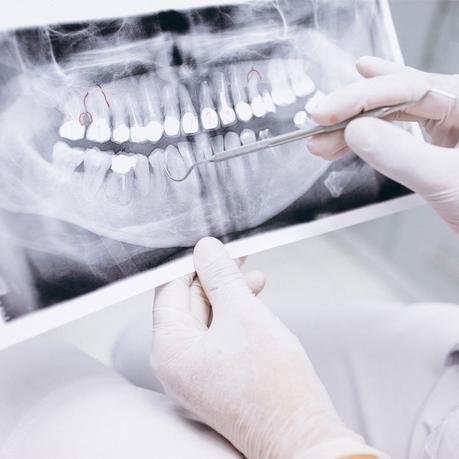
What do you know about tooth decay? What factors cause this complication? Are the symptoms of front tooth decay different from back teeth? In this article, we will examine this issue and introduce you to the ways to treat it.
What Is Tooth Decay?
Tooth decay is one of the most common health problems in the world. Decayed teeth are caused by a series of cavities in the tooth that eventually create holes or pores on the tooth’s surface. This problem can occur in all people and at any age, even children and minors, and affect the health of their teeth.
Tooth decay can cause pain and infection. Tooth decay starts from the early stages and gradually increases due to lack of treatment and non-observance of oral and dental hygiene principles and affects the deeper layers of the teeth.
This problem can lead to severe toothache, infection, and eventually tooth loss. Regular visits to the dentist and standard and correct brushing and flossing habits can protect people from tooth decay.
Types of tooth decay classes
Tooth decay can be categorized by stage or class of decay. These steps include the following:
Superficial Visible Decay
This stage describes the level of tooth decay that occurs on the tooth surfaces and can be easily seen by the dentist. This category includes cavities on the chewing surfaces of the back teeth, such as molars and premolars (small molars), and decay on both sides of the front teeth.
Invisible Surface Decay
At this stage, cavities are formed on the surfaces between molars and premolars and are not visible to the human eye.
Interdental Caries
This decay occurs on the surfaces between the front teeth but does not involve the cutting edges of the teeth. Similar to the second stage, decay is not visible in this classification.
Caries Up to The Edge of The Teeth
This decay also occurs on the surfaces between the front teeth, but it also affects the cutting edges of the teeth.
Caries Up to The Gum Line
At this stage, cavities appear near the gum line or behind the front or back teeth.
Major Dental Caries
This caries can be seen on the upper surface of the teeth, both on the incisal edges (4 upper and lower anterior teeth) and the tips of the posterior teeth.
The cause of tooth decay
Several factors can cause tooth decay. The leading causes of tooth decay include the following:
- Inappropriate feeding
- Bacteria
- Lack of oral hygiene
- Gum disease
- Having crooked teeth that are harder to clean
- Smoking
- Taking medications such as asthma medications that cause dry mouth
- Severe blows to the teeth
Tooth decay is caused by plaque, a sticky layer of germs in the mouth. The sugar in the food and drinks consumed by the person is converted into acid by the microbes in the plaque and gradually damages the teeth.
How Does Tooth Decay Occur?
The process of caries is like this. First, a sticky and transparent layer of dental plaque covers the teeth. This is usually caused by high sugar consumption and starches and not removing them.
In the future, oral and dental bacteria start feeding on these plaques, gradually hardening on the teeth and turning into mass. The acids in these plaques gradually destroy the complex and outer enamel of the tooth, and this erosion will cause pores or small holes in the tooth enamel.
Wisdom Tooth Decay
Usually, the tooth’s location is one of the most influential factors in the cause of tooth decay. Caries often occurs in people’s back teeth, especially molars and wisdom teeth. These teeth have grooves, pits and cracks, and numerous roots that can collect food particles.
It is usually tough to keep these teeth clean, especially the wisdom teeth, which are much more challenging to reach, and the toothbrush cannot reach them quickly, so they have a higher risk of decay. Therefore, caries can be seen more in the rear teeth.
QUALITY AFFORDABLE DENTAL IMPLANTS
Copperhills Family Dentistry specialists provide specialized dental services that help our patients cultivate healthy and happy smiles. We’re happy to provide compassionate care coupled with cutting-edge technology.
dental implantsFront tooth decay
It is true that tooth decay primarily affects the back teeth, but front teeth can also suffer from neglect. If the front teeth are damaged, the same symptoms of pain, tooth sensitivity, stains and decay are observed on the teeth.
But there is a worse problem regarding the decay of these teeth, and that is the very unfavourable effect that decayed front teeth have on the appearance and smile of people. Therefore, the treatments needed to fix the decay of the front teeth are essential, and this problem must be solved immediately. If the front teeth are decayed, it will have a very negative effect on reducing people’s self-confidence.
Whitening cosmetic
dentistry dental cleaning
and checkups
Signs and symptoms of tooth decay
Tooth decay, like any other disease, is characterized by a series of signs and symptoms. The signs and symptoms of cavities vary depending on their size and location. Usually, when a hole has just been created on the hard surface of the teeth, there are no symptoms. As the level of tooth decay increases, the symptoms may also intensify and show different signs. These symptoms include:
- Toothache and pain that occurs suddenly without any cause or background
- Sensitivity when eating and drinking sweet things or hot and cold drinks
- Creating visible holes or cavities
- Occurrence of brown, black, or white spots on the surface of the teeth
- Red and swollen gums
- Bad Breath
- An unpleasant taste in the mouth
Prevent Tooth Decay
Some ways and methods can be followed to prevent tooth decay.
Brush Your Teeth
Brushing is one of these things that are also very important. You should brush your teeth at least twice a day for two minutes every day with a toothbrush and toothpaste containing fluoride.
Reducing Consumption of Sweet Foods and Carbonated Drinks
To prevent tooth decay, it is better to avoid sweet foods and carbonated drinks as much as possible and replace them with water.
Healthy Diet
Having a healthy diet is also very important. The diet should be completely healthy and balanced and provide all the nutrients with the body needs. Eating fewer snacks and sweets, etc., can also prevent tooth decay.

Regular dental checkups
Another critical point to prevent tooth decay is regular dental checkups. Many experts recommend you visit a dentist every six months to ensure your teeth are healthy. Especially since decay in the first stages has no specific signs.
Remove Tooth Decay
To fix tooth decay, it is necessary to see where the pollution is and at what level and intensity the teeth have decayed. This case can be critical in choosing the type of treatment to remove caries. Sometimes it is possible to remove the decay easily; in some cases, more extensive treatments are needed for this purpose. Home treatments and specialized treatments in the dental office are among these options.
Treatment of Tooth Decay
The treatment of tooth decay depends on the stage of the disease. It is usually possible to stop or even treat tooth decay in the early stages. If the level of caries is mild, it can generally be treated using fluoride and a series of preventive measures. The dentist usually uses a simple examination or X-ray to detect caries in these early stages.
Complications of Tooth Decay
The occurrence of mild to severe pain is one of the main complications of this condition. But its complications are different for different people.
Among the most common complications of tooth decay are the following can be mentioned:
- Mouth body odour
- Spread of infection to the gums
- Bleeding gums
- Teeth sensitivity
The worst side effects can be seen in children and young people. In children, the complications of tooth decay can harm the child’s growth and nutrition. In addition, caries in children can adversely affect their speech and even cause problems in their jaw growth. In addition, the presence of this caries in children’s milk teeth can harm the health of their gums and permanent teeth and cause problems for them in the future.

